What is a fat bike for and how to choose it?
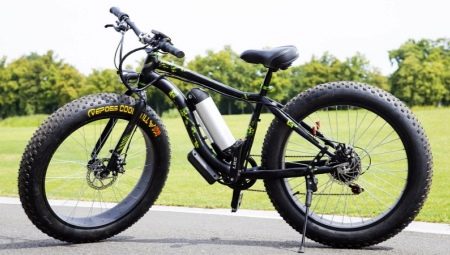
The advent of a bike with increased tire thickness once made a splash among fans of all-season riding. Today, the pros and cons of bicycles with fat wheels are often discussed as well. A fat bike is hardly cheap or affordable, but it certainly deserves the attention of those who prefer off-roading to traditional highway driving.
The first impression a bike with large wheels makes ranges from delight to rejection. In practice, fatbikes are characterized by an easy and soft ride, stability on any surfaces and high cross-country ability.
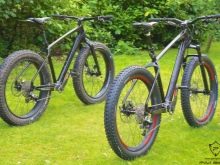
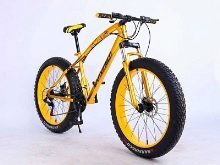
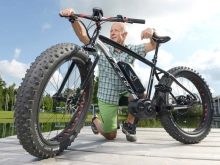
What is it and what is it for?
A mountain bike with thick wheels or simply a fat bike is one of the types of two-wheeled transport suitable for use regardless of the seasons and climate.... Suffice it to say that its official appearance took place in Alaska - at a point on the planet that is not distinguished by favorable weather conditions.
The bike is called fat or "fat" due to the fact that its wheels have oversized tires, which seem excessively large against the background of the classic "shoes" for two-wheeled vehicles.
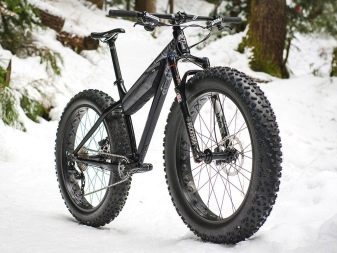

Fat bike first designed to overcome any off-road. Oversized tires with intensive inflation feel confident on the highway and demonstrate good speed characteristics. And by releasing the pressure in them, you can get excellent shock absorption and high permeability on a viscous, slippery surface, it is easy to overcome mud or snow slurry.
In terms of its characteristics, this is a completely classic mountain bike, but with a stiffer fork. Among the important parameters of a fatbike are tire pressure. – it varies from 0.2 to 2 atmospheres.
Tires are also custom sizes. Their width can be 3.5-5 ", suitable rim width is 65-100mm.
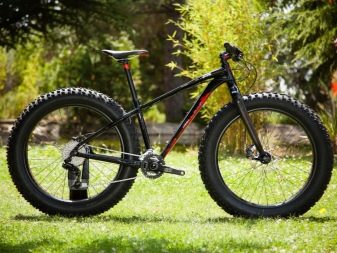
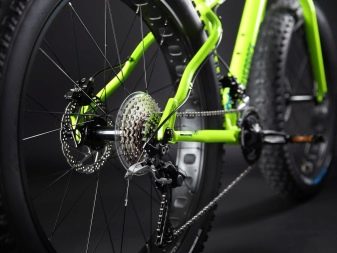
History of creation
The fat bike, or rather its prototype, first appeared in the advertising campaign of Currys, a British retailer, back in the 30s of the XX century. The image of a man riding a bicycle with thick tires illustrated a series of advertising sketches and was widely published in specialized publications for cycling enthusiasts. But the term "fat bike" itself, as well as its real embodiment, was introduced into use by a completely different person.
The creator of the first of the famous fat bikes is considered Mark Grunwald - Alaska resident who decided to put a mountain bike frame on 80 mm rims. The standard 3 "tire has been stretched to 3.5". Minnesota-based Surley launches fatbike production - today it is she who is the recognized leader in the production of special rims for such equipment.
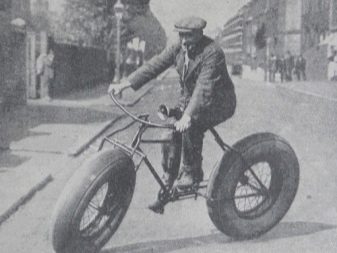
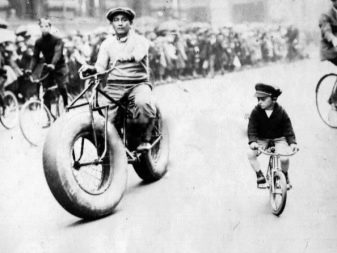
Launched in 2005, the Pugsley is groundbreaking... Fat bikes with tires up to 5 ″ wide and the same size of the front and rear wheel hubs have made it possible to make a real revolution in the world of cycling. Another important feature is the widest possible rim through which you can see the rubber of the inserted camera.
By 2014, fatbikes received a lighter frame type - many modern models come with a carbon base, as well as lighter rims. The minimum assembly weight of the bike is reduced to 10 kg, while the handling is almost the same as that of conventional mountain bikes. Today, special competitions are held for athletes on fat bikes - they are held in the winter on a snow-covered track in Iowa. Since 2015, this sport has been officially included in the US Championship.
There is even a world fat bike day - it is celebrated on the first day off in December.
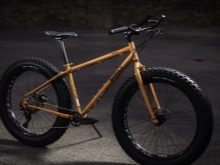
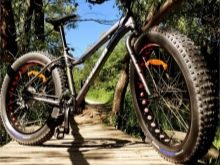

Pros and cons of using
The advantages of fat bikes are quite obvious - this type of mountain bike really has many advantages. Here are just a few of them..
- Versatility... They can be operated in winter and summer - this is a transport that has no seasonal restrictions.
- Original appearance... Bicycles are eye-catching, and since the fatbike culture in Russia is not yet very developed, you can stand out even at a massive thematic event.
- High cross-country ability. On such a bike, you can storm any off-road, if you adjust the tire pressure correctly.
- Bushing versatility on select models... The front and rear can be swapped, which can be important in the conditions of a long road.
- Reliability and good handling. A fat bike almost never loses traction, even in the most extreme situations.
- Highway use. With fully inflated tires, this bike is suitable for cycling on flat roads or for city traffic.


But it does not do without its drawbacks. It is customary to refer to them high cost - the cheapest on the market are Chinese and domestic models, you will have to pay much more for American equipment. One more problem - heavy weight: Fully loaded, the fat bike can weigh up to 20 kg, which greatly limits the convenience of its transportation.
There are difficulties in finding spare tires or rims, sometimes spare parts for repair can only be found abroad.
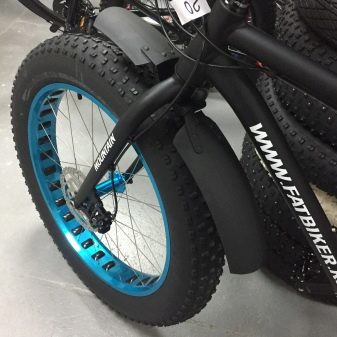
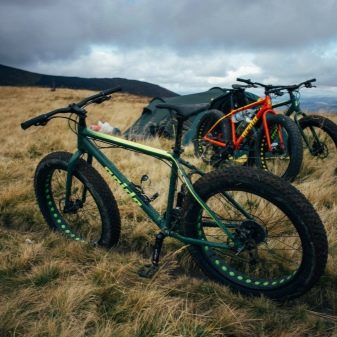
Which is better: mountain bike or fat bike?
At first glance, a fat bike differs from an ordinary mountain bike only in the size of its tires. But is it really so? It is enough to compare these two types of bicycles according to their main functional capabilities in order to find out their differences and draw conclusions.
- Passability. Even a mountain bike “shod” in mud tires will not travel on all roads.The fat bike can even overcome off-road terrain thanks to the wide tires, the pressure in which can be reduced to very low levels. The tires themselves are thick and reliably protect the inner tube from punctures.
- The weight. Here, light mountain bikes have a noticeable advantage, while on a fat bike, only the wheels in a pair are hung out by 6-8 kg, and the total weight of the bike reaches 20 kg. Mountain models hardly reach 10 kg and require significantly less effort when moving uphill or driving on the highway.
- Depreciation... Without the suspension fork upgrade, the mountain bike is much stiffer and vibrates frequently on uneven roads. The fat bike, even without shock absorbers, provides a greater softness of the ride. However, finding a model with a rigid fork in this class is problematic - almost all of them are equipped in front with additional components to soften the travel.
- External attractiveness... It's a matter of taste here, of course, but overall, fatbikes have a much more impressive design. As befits off-road vehicles, they demonstrate their power not only on the track. Mountain bikes are striking only in the variety and brightness of colors.
- Comfort and speed... If you want to go fast, you should choose a mountain bike or an electric fatbike. Conventional models are simply unable to accelerate above 30 km / h. But in terms of comfort, fatbikes are confidently leading - it is easy to navigate them even for beginners.
- Performing stunts... Fat bike is not about extreme riding in the sense of a variety of jumps. He just successfully overcomes road obstacles. On a mountain bike, an experienced rider can easily perform tricks, he is more versatile in application.
- Service... Fatbike is clearly more expensive for its owners, because it is quite difficult to find spare parts for original models. The market for mountain bike parts and consumables is much broader and more diverse.
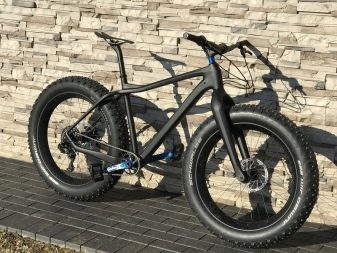
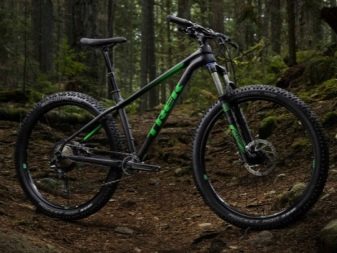
If we compare both types of equipment on all points, then both of them will receive approximately the same number of pros and cons. About fatbikes, we can say that they were created to solve specific problems and, like all SUVs, are heavier and more clumsy.
Considering them as a full-fledged replacement for a mountain bike is still not worth it.

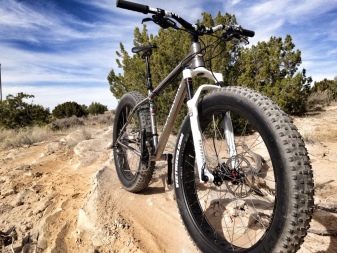
Device and management
The characteristics and structure of fat bikes are what you usually pay attention to. A bike with thick wheels needs a solid and solid support structure. For off-road driving, models are produced with tires on alloy wheels and with a frame reinforced by 2-3 times in comparison with the classic solution. In addition, the following parameters are considered important:
- increased steering wheel width - up to 720 mm;
- curved, modified geometry of the fork and frame with curved "stays" of the triangle at the back;
- disc braking system on a hydraulic or mechanical basis;
- bike weight - from 12 to 19 kg.
The standard fatbike tire width is 3.5 to 4.8 "with a diameter of 26", for e-bikes of this type, it is even higher. For example, the top-end Hanebink models have tubeless wheels with wide tires measuring 8x20 inches in width and diameter. Wheel sizes are basically the same as conventional mountain bikes - 26, 27.5, 29 ″.
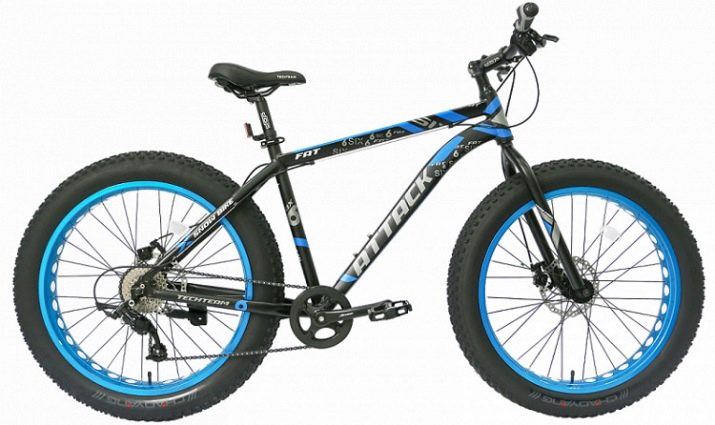
It is worth considering in a little more detail the operating parameters at which the fat bike is operated. Tire pressures range from 5 PSI to 30 PSI or 0.2-2 atmospheres. In the first case, the tire will smoothly flow around any obstacles, providing excellent traction with the road surface - it needs to be inflated to 5-7 PSI. In the second, it will be firm and tough, optimal for a flat track or for asphalt. On average, it is enough to simply increase the pressure level to 15-18 PSI for a comfortable ride.
According to the type of transmission, fatbikes are divided into models with a planetary hub and a conventional one with a tensioner. The first option is installed in offset frames, has a closed design, which is optimal for extreme travel conditions. On the non-offset ones, there are usually ordinary bushings. There are versions with and without shock absorbers - with a rigid fork.One of the features of fat bikes is precisely that the tires themselves largely compensate for the vibration and unevenness of the road surface. This is the version that is usually manufactured in a single-speed version.
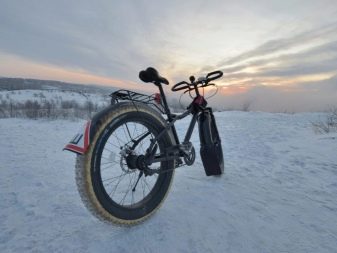
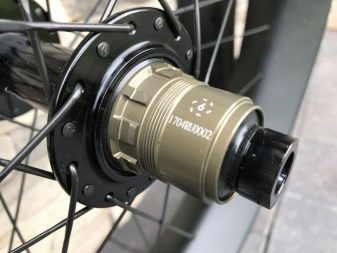
A distinctive feature of the fat bike is rim... It has a box-type design and a width of up to 101 mm. Rims are made of carbon, aluminum alloys, steel. The spokes on fat bikes are pretty standard. But the bushings are longer. There are options for:
- 135 mm;
- 142 mm;
- 150 mm;
- 170 mm;
- 190 mm.
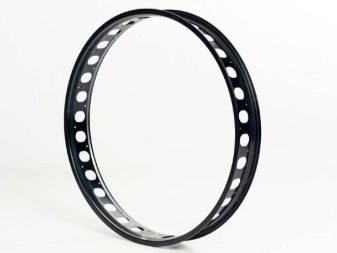
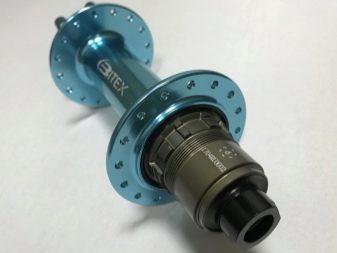
Typically, the model's lifting capacity is indicated in the manufacturer's instructions. As a rule, this technique can withstand a rider's weight over 100 kg. Options with a rigid fork are considered more durable and reliable.
Fatbikes with an offset frame have an offset of the feathers - they are deflected to the right at a distance of 17.5 or 28 mm. This ensures the displacement of the sleeve relative to the axis of the frame in the longitudinal plane. Offset and is called the offset of the holes in which the spokes are installed. When they are symmetrically positioned on a 135 mm wide rear hub and installed in an offset frame, the right end with the drum will be displaced to the side and prevent the chain from contacting the thickened tire.
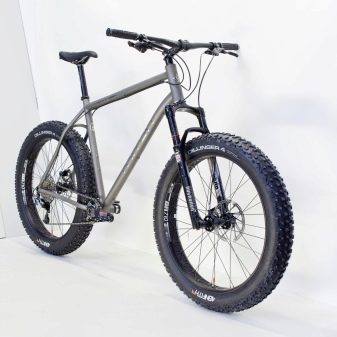
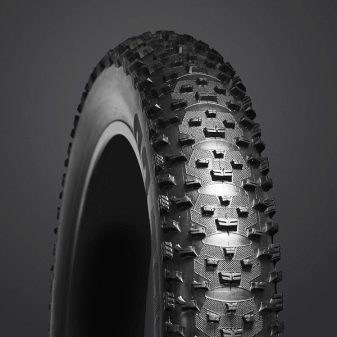
In fact, this combination of components makes it possible to adapt the mountain bike hubs to the fatbike design while maintaining full drivetrain functionality. In addition, it is on the offset models that planetary transmissions are installed. In general, this option is good precisely because it allows you to ensure the adaptability of parts from mountain bikes to the design of a fat bike. Another important point - these hubs can be interchanged since the same modification is used on both wheels.
It is worth considering that this type of fatbikes is considered a variant of the old school - it is almost impossible to find them in mass production. One of the few exceptions - Surly Pugsley and Charge modelswhere the offset is kept especially for amateurs. Offset fat bikes are the most common options today. The most commonly used here is a 170mm or 190mm wide rear hub. Symmetrical fatbikes are more comfortable to use, they are more stable and stronger than offset ones.
On such hubs, you can assemble a set on thin rims for the summer with a wheel diameter of 29 inches.
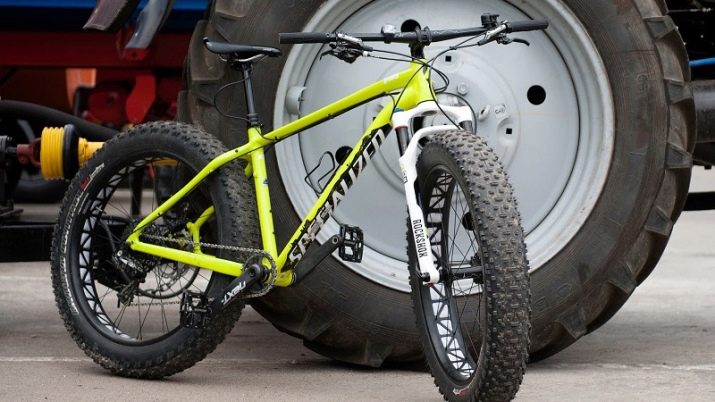
When riding fat bikes, difficulties usually do not arise even for novice riders. One has only to take into account that when climbing on such a bike, even a slight change in the incline significantly complicates the riding process and requires much greater physical effort. Another important point is that covering any distance will take more time compared to a regular mountain bike. On average, the coefficient will change by 1.3.
The riding style will also have to be changed. You will not be able to be in the saddle all the time; you will need to work with your feet from time to time. Tire pressure adjustment is also very important. It will have to be changed at every transition from soft to hard ground, otherwise the flat tires will literally stick to the asphalt. Difficulties arise even with overcoming small curbs - jumping on them is much more difficult than on a regular mountain bike.
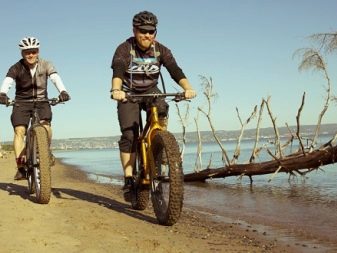
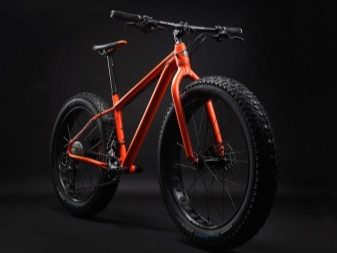
Views
All types of fatbikes that exist today can be divided into the following categories.
- Single speed... The easiest option with a rigid fork and no speed variations.
- Classical... With conventional or planetary hubs, various number of shifting speeds, offset or no-offset design.
- Electric... Nice urban option. You can find a mini fat bike with reduced wheel diameter. At the end of the battery charge, the electric bike moves due to muscular strength.
- Folding... Compact version, convenient for seasonal storage and transportation. The foldable frame does not add any more benefits, but can be considered a feminine version of the fat bike.
- Double-suspended. The double suspension is a good solution for off-road driving.It significantly improves handling, which is of great importance on a viscous surface (slush, sand, mud).
- Four-wheel drive... All-wheel drive makes it possible to increase the already good cross-country ability of the equipment. Found on electric models. In this case, 2 wheel motors are included in the overall package.
- Tricycle... Tricycles are most commonly seen in electric versions and are considered cargo versions of regular fat bikes, but with a large rear rack. In addition, there are models with a pair of front wheels. They were created for driving on sand where there is a problem with the prohibition of motor gasoline vehicles.
Of course, there are others - customized versions of fat bikes, but in most cases they are made to order and do not go into serial sale.
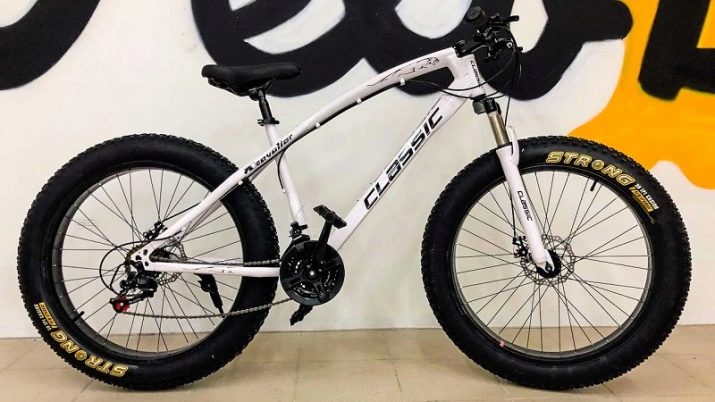
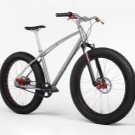
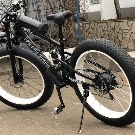
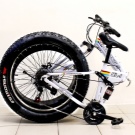
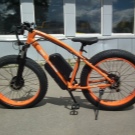
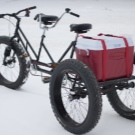
Popular manufacturers
An overview of the most popular fat bike brands cannot be imagined without representatives from the United States. But they are already successfully competing with firms from Asia and Russia.
Surly Bikes
The manufacturer of the first serial fat bike. The company has existed since 1998, is based in the USA (Bloomington), and the production is located in Taiwan. The company is considered a recognized authority in its industry and is truly serious about its mission to popularize fat bikes. There are 3 original models in its line, each of which has its own striking features.
- Pugsly Is an extreme fatbike built for the toughest off-road terrain. The model has an increased wheelbase, a 135 mm offset hub and is well adapted to ride on any surface, regardless of the weather. A variety of standard mounts allow you to hang trunks, water bottles, expedition equipment on the frame. The frame is made of chromed steel, the seat clamp is stainless, 11 speeds. The model is equipped with 26 × 4.3 ″ tubeless tires in the original configuration.
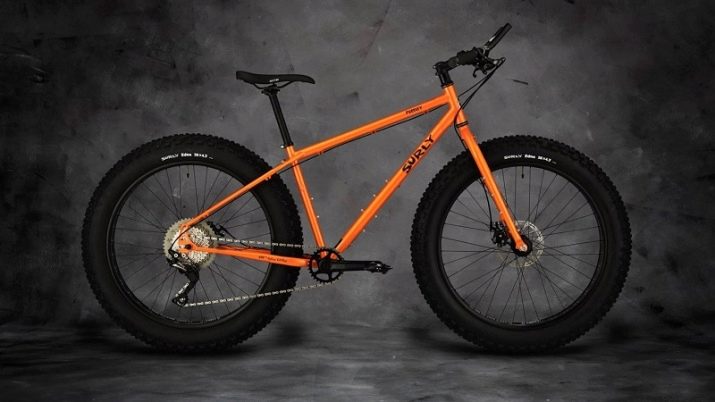
- Wednesday... Universal model for tourist trips and walks outside the city. The fat bike is available on 80mm and 100mm rims with 26 "3.8" or 26 "4.6" rims. When creating this version, we used developments from the Turing and Trail series. The result is a balanced option for urban and off-road riding.
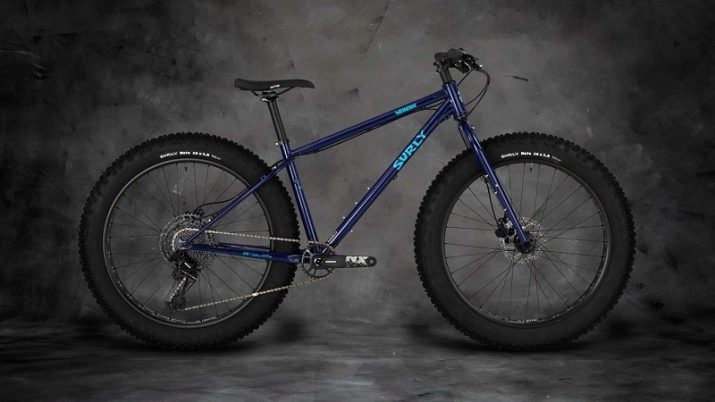
- Ice cream truck - fat bike for long distance travel. As the manufacturer promises, snow drifts, sand dunes and a meeting with a grizzly bear are not afraid with him. The model is realized on a rim of 100 mm, with wheels 26 × 5 ″. This fat bike has a long top tube and a short, 68-degree recline seat.
It is one of the fastest and most maneuverable fat wheel bike options, reliable and safe.
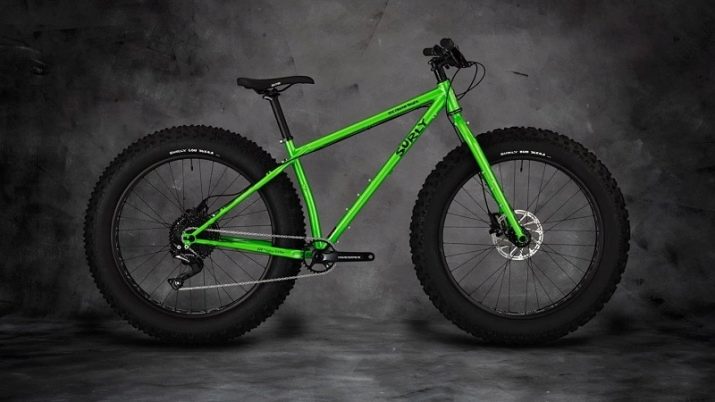
Love freedom
A Chinese brand that has managed to gain popularity outside the Middle Kingdom. In Russia, they quickly appreciated his loyal sales policy and a good set of models. All Love Freedom fatbikes are equipped with frames made of aluminum alloy and high-carbon steel grades, original ergonomic seats. Among the most popular models are two.
- ATV4.20.4. Model with 21 shifting speeds, Shimano drivetrain, 26 "wheels and 17" frame. The fat bike has a front shock absorber, a footrest, a lamp, a saddle bag, and a horn.

- GA1. Off-road fat bike in the simplest version, the budget model is equipped with a light aluminum frame, disc brakes, weighs 22 kg. The chain is protected from stones and dirt.
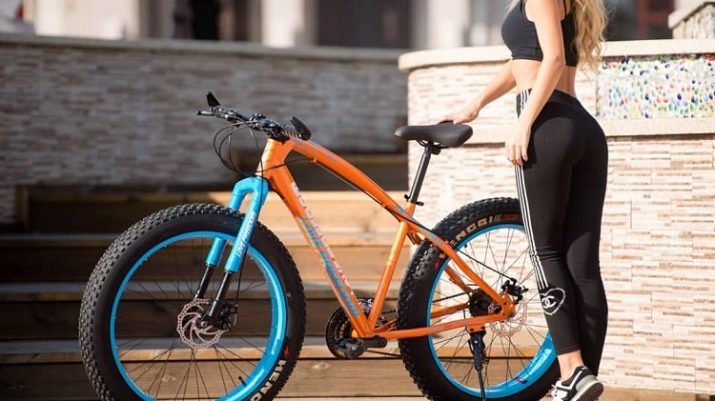
Land rover
The company successfully produces fat bikes in an affordable price segment. Among the top models of the company are White Bafang 750W with electric motor, lightweight aluminum frame, disc brakes and cast discs. Another interesting option is the Land Rover Khaki on the spokes. This is a budget analogue of the top versions of other manufacturers. The fat bike is equipped with 26 × 4 ″ alloy wheels, withstands a load of up to 130 kg due to the steel frame, and weighs only 17 kg.
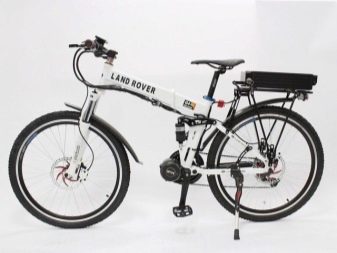
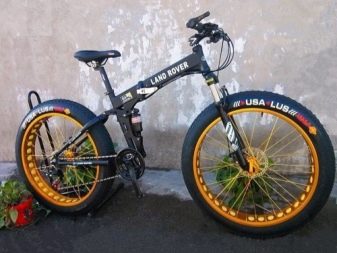
Benshi
A Chinese brand that successfully manufactures fat bikes for city driving and out-of-town walks. There are no very impressive and bright novelties among the models. These fatbikes can be attributed, rather, to the amateur segment - they are often chosen by teenagers. Models of the same type, differ mainly in colors, are designed for a size of 155 cm. Equipped with discs 26 × 4 ″, withstand a load of up to 150 kg. The bike is quite heavy at 22 kg. It is equipped with mechanical disc brakes.

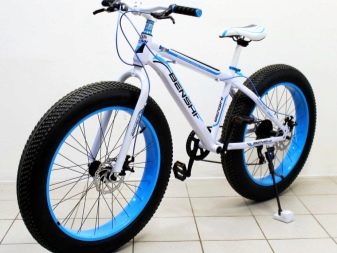
Petava
A manufacturer of not only fat bikes, but also sports bicycles. The company operates in China, deliveries are carried out both to the Russian market and to Asian countries. The model range differs mainly in the design of the frame. Among the popular options stands out Petava 26-21 with high carbon steel frame and sizes from 140 to 190 cm. This model is suitable for teenagers. Includes mechanical disc brakes, Shimano transmission. Gear shifting is performed in 21 positions.
The Petava 24-52 model has an original frame shape, made on 24 × 4 'tires, suitable for children from 10 years old. The rollover fork is convenient to use, the set includes a removable footrest. The tires are equipped with grousers for easy mud passage.

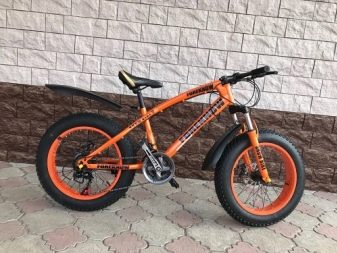
Forward
Russian manufacturer of bicycle transport based on the facilities of the former Kama plant in Perm. The company has a Bizon product line that features fat bikes. For teenagers and women, the Bizon Mini is offered on 24 × 3 ″ tires. The fat bike is equipped with a light aluminum frame, a front suspension fork, and is equipped with mechanical disc brakes.
The full-size version of the Bizon 26 is 18 ″ and is suitable for people no taller than 180 cm. Fork and frame are aluminum, lightweight, no shock absorption. The brake system is disc, mechanical. 26 × 4 '' wheels allow you to overcome obstacles on very uneven roads. The wheel rims are also aluminum, double-walled.
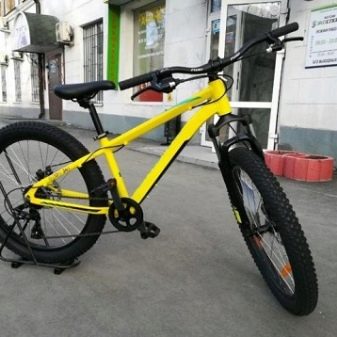
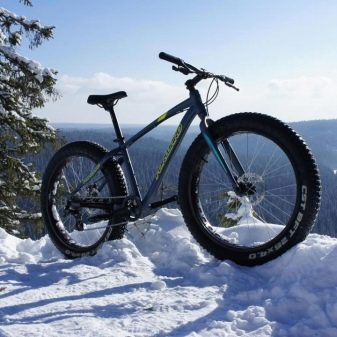
There are also quite a few noteworthy options for electric bikes.
- Eltreco... Russian brand offering various types of SUVs. Among the most popular models are Insider with a battery, the reserve of which is enough for 50 km. The fat bike develops a speed of up to 35 km / h, with mechanical control there are 7 speed modes.
Another brand model - Multiwatt 1000W, withstands rider weight up to 120 kg, equipped with front and rear hydraulic brakes. Foldable electric bike, suitable for transportation in the trunk of a car.
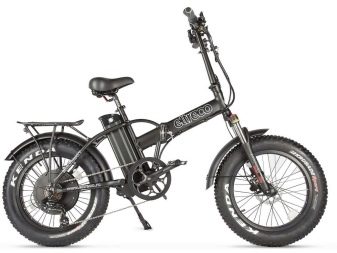
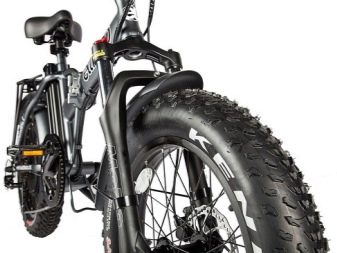
- "Bear". Russian manufacturer producing electric off-road bicycles on wide wheels in various configurations and designs. There is a folding version of the "Bear 1000", developing a speed of up to 45 km / h, with a shock-absorbing fork and hydraulic disc brakes. The all-wheel drive model "Bear 2 × 500 W" is also popular. It has 2 driving motor wheels at once, four-wheel drive can be turned off, the power reserve is enough for 25-40 km.
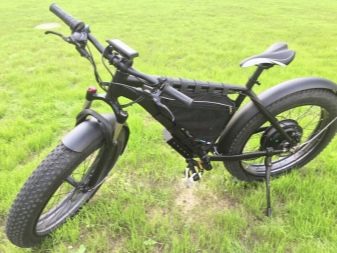
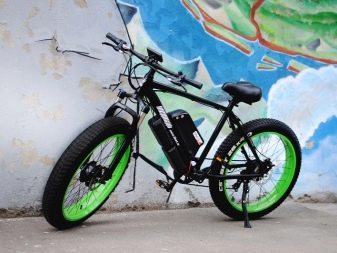
- Wellness. A Chinese brand that produces its electric fatbikes in vibrant colors. The most popular is the all-wheel drive model Bad Dual 700. The model has a fingerprint recognition system. The battery lasts for 45 km, the charging time is 8 hours. In mechanical mode, the rider has 6 speeds and 9 assisted pedaling modes for the most comfortable rides.
You can also note the Chinese electric bikes Hummer - they are presented in the budget segment and cost almost half the price of their counterparts from the USA and Russia.
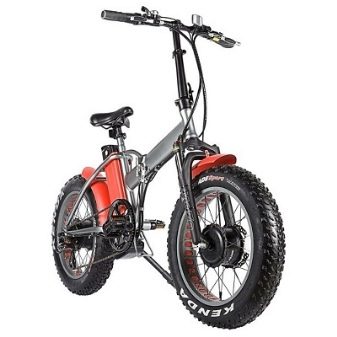
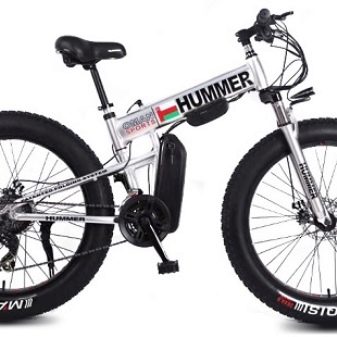
How to choose?
The problem of choosing the right fat bike is faced by every rider - from beginner to pro. Among the most important points when choosing, the following should be noted.
- Speed characteristics. The maximum speed of a fat bike is determined by the type of surface on which it rides. Power-driven models rarely reach speeds over 30 km / h. Models with an electric motor can accelerate above 40 km / h.
- Carrying capacity... It exceeds 100 kg. Usually there are models designed for 80-140 kg of human weight. Even a rider with a heavy rucksack behind his back may not be afraid of discomfort while driving.And when installing the rack, you can easily hang the load on the frame.
- Height. Frames 18 ″ are designed for a person's height of 165-178 cm. Everyone else should choose the 20 ″ option. The distance from the groin to the saddle must be at least 10 cm.
- The weight... The lightest models of fat bikes weigh about 10-12 kg, but the vast majority of classic models are much more massive. If you want to feel the real power of an SUV, you need to choose versions weighing 14-18 kg.
- Tread type... For out-of-town driving, you will need low to medium pressure mud and gravel tires. For riding on asphalt, the slick and semi-slick options are suitable. Studded tires are worth buying for the winter.
- Braking system type. It is worth focusing on such points as the intensity and distance of the planned trips. On long descents and gentle trails, it is more convenient to move with hydraulic brakes. In case of frequent driving in mud, it is wiser to choose a mechanic in order to reduce wear on the pads.
- Plug type... Rigid - The rigid version without shock absorbers is quite common and does not pose any particular problems due to the variation in tire pressure. But if you have to drive on the highway with full camera pumping, it is better to give preference to options with additional shock absorbers.
- Wheel diameter. The standard version is 26 ″. The larger the rider, the higher this figure should be.
- Origin. American fat bikes continue to break popularity records and remain the most reliable. Chinese manufacturers and Russian brands are reducing the price due to savings on quality and, in general, are still not very competitive.
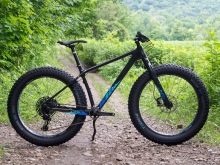
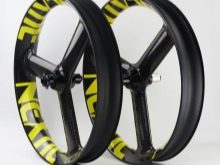

By following these recommendations, you can easily find a suitable fat bike for off-road riding both in the format of amateur riding and for serious expeditions.
For who needs a fat bike and why, see the next video.








